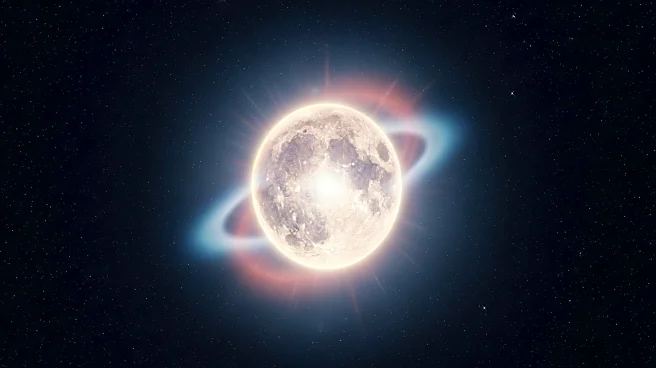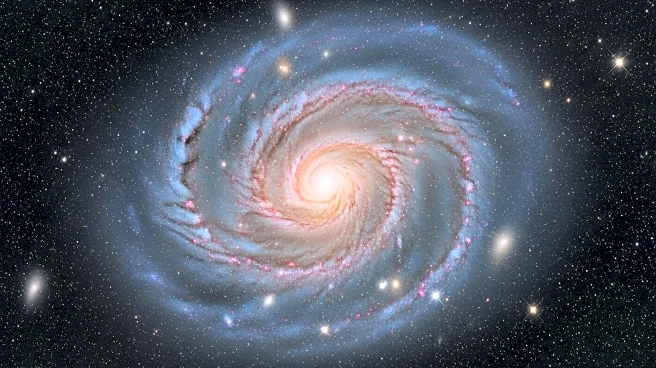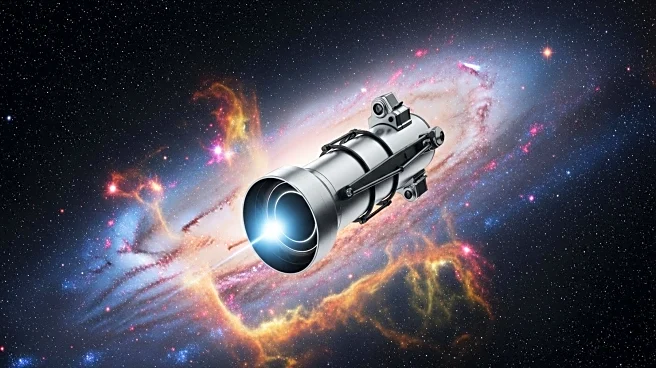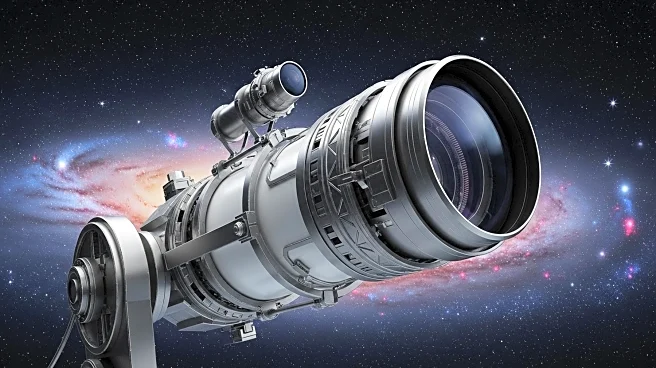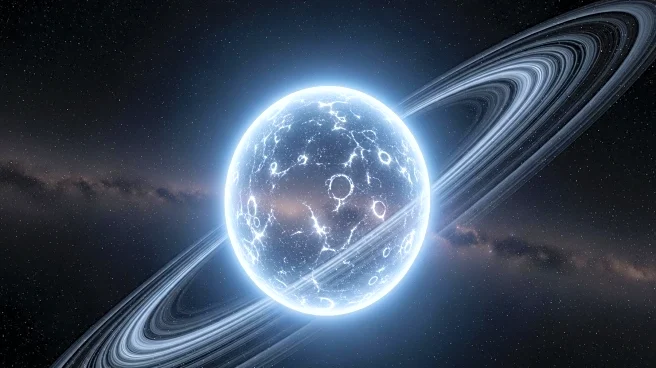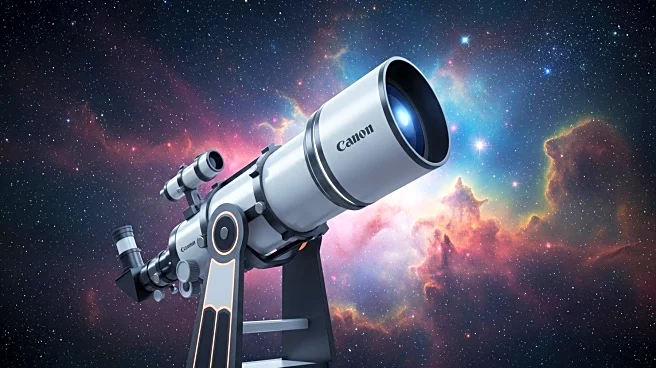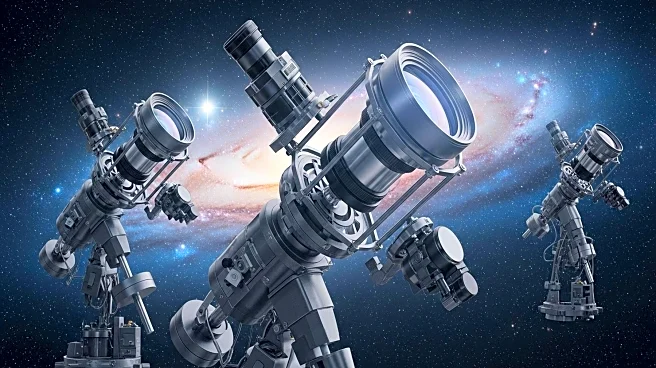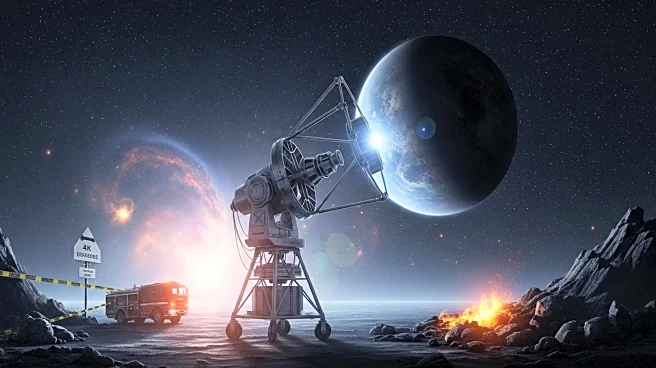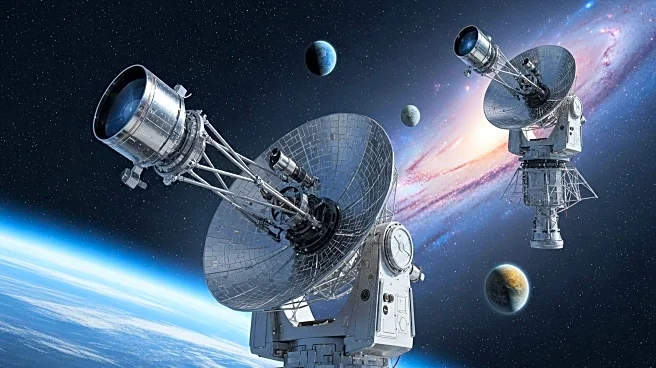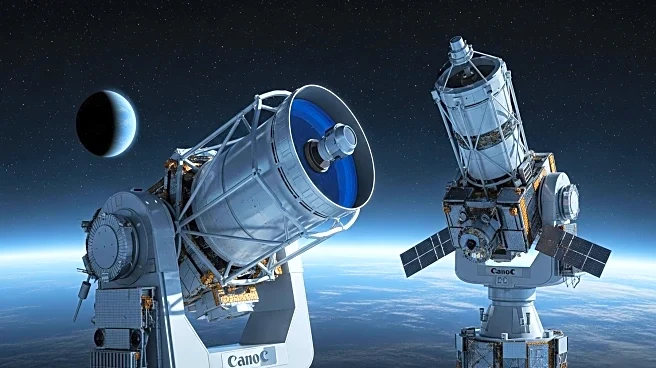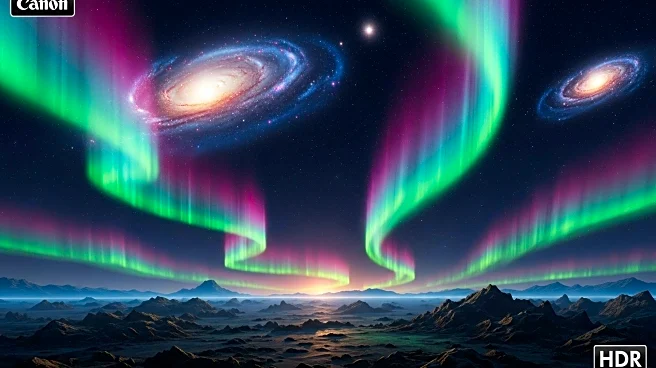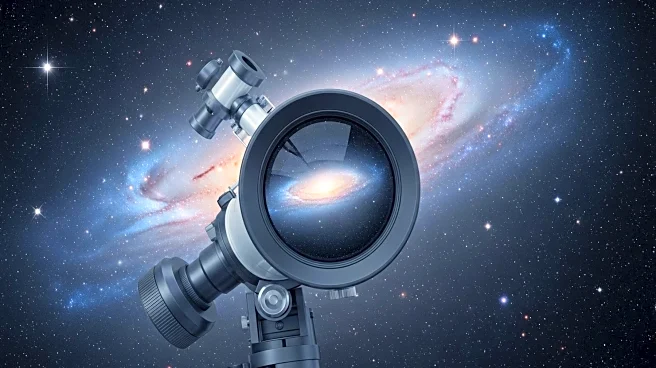What is the story about?
What's Happening?
Astronomers have observed a rogue planet, Cha 1107-7626, consuming 6 billion tonnes of gas and dust per second, a growth rate typically associated with stars. This discovery challenges existing theories about planet formation, suggesting that rogue planets may form similarly to stars. The planet, located 620 light years away, was first noted in 2008 due to a primitive planetary disc. Recent observations reveal a dramatic increase in its growth rate, prompting scientists to reconsider the processes that differentiate stars from planets.
Why It's Important?
This finding has significant implications for our understanding of celestial formation. It suggests that the mechanisms driving star formation may also apply to rogue planets, potentially altering the classification criteria for celestial bodies. This could lead to a reevaluation of how astronomers study and categorize planets and stars, impacting future research and exploration strategies.
What's Next?
Further studies are needed to understand the sudden increase in the planet's growth rate and the underlying mechanisms. Astronomers may focus on identifying the chemical imprints that differentiate stars from planets, which could provide insights into their formation processes. This research could pave the way for new discoveries about the universe's structure and the prevalence of rogue planets.
Beyond the Headlines
The discovery raises questions about the nature of celestial bodies and the criteria used to classify them. It challenges the traditional boundaries between stars and planets, suggesting a more fluid continuum. This could lead to a paradigm shift in astronomy, influencing how scientists approach the study of the cosmos.
AI Generated Content
Do you find this article useful?
